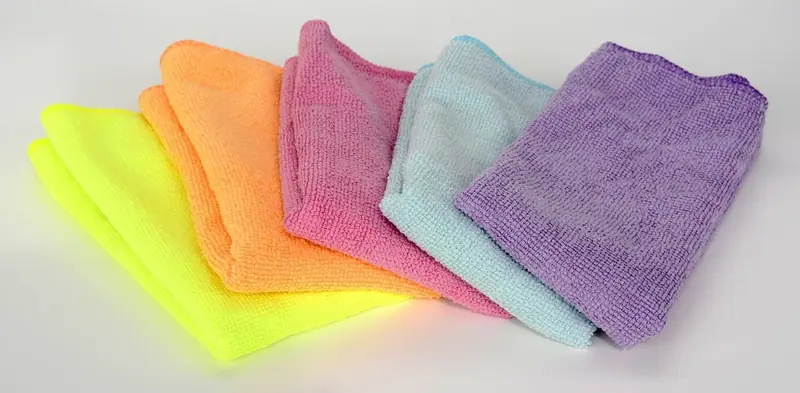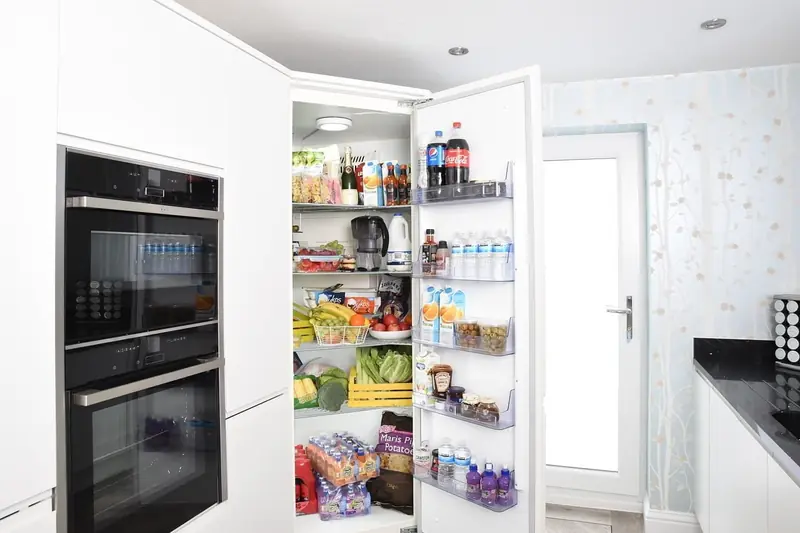
Chances are, your kitchen is home to many items that seem clean at first glance but could actually be breeding grounds for germs. How often should you replace kitchen towels, and is it really necessary to bleach your sink more than once a month? An expert provides answers to these questions and more in her kitchen care recommendations.
Handles and Buttons
The buttons and dials on kitchen appliances can harbor germs. However, as cleaning content expert Danielle Mason points out, people often overlook cleaning them because they don’t consider it important.
This is a mistake, as it’s crucial to keep these areas clean when handling raw meat and food to prevent cross-contamination. Therefore, handles, buttons, and dials on kitchen appliances should always be disinfected with a cloth that kills bacteria.
Cleaning Cloths
Ms. Mason emphasizes that cleaning tools themselves need to be clean. That’s why she soaks her cleaning cloths in bleach every evening, leaving them in the solution overnight.
 According to Ms. Mason, this allows her to start fresh in the morning without bacteria. Additionally, she recommends replacing cleaning cloths every two weeks while always bleaching them each night.
According to Ms. Mason, this allows her to start fresh in the morning without bacteria. Additionally, she recommends replacing cleaning cloths every two weeks while always bleaching them each night.
Kitchen Sponges
Ms. Mason stresses that sponges are unsanitary because they remain damp and can carry E. coli. According to the expert, even microwaving them won’t kill all the germs. Therefore, it’s best to avoid using sponges whenever possible.
Kitchen Towels
As Ms. Mason notes, it’s wise to have one towel for each day of the week, as they can harbor too many bacteria and germs that spread throughout the kitchen. If you dry pots and pans and then wipe down your surfaces, that’s not ideal.
Cutting Boards
These kitchen accessories (especially wooden ones) can be havens for bacteria. Ms. Mason advises using color-coded boards for different types of food, keeping separate ones for meat, fruits, and other products.
 The expert also mentions that it’s best to wash them in the dishwasher, as the high temperature can eliminate all germs. Another option is to boil water in a kettle, pour it over the cutting boards, and let it sit for a while. However, it’s generally better to avoid wooden boards altogether, as such cleaning methods can damage them.
The expert also mentions that it’s best to wash them in the dishwasher, as the high temperature can eliminate all germs. Another option is to boil water in a kettle, pour it over the cutting boards, and let it sit for a while. However, it’s generally better to avoid wooden boards altogether, as such cleaning methods can damage them.
Kitchen Sink
According to the expert, the sink is a true breeding ground for bacteria and dirt. Microbial communities have been found in the plumbing areas beneath sinks that can cause serious illnesses.
Ms. Mason states that she never washes her hands in the sink or pours dirty water down it, and she recommends everyone follow these rules. The kitchen sink should always be kept clean to prevent cross-contamination.
How to Clean the Inside of the Sink and Drain?
Baking soda and vinegar are the best ways to clean the sink. You can also bleach it, but be cautious with bleach, as it can linger at the bottom of the sink.
Ms. Mason recommends cleaning this part of the kitchen daily. The pipes and cabinets around the sink can lead to rodent problems. To prevent these pests from entering, small gaps should be sealed.
Refrigerators
The expert recommends deep cleaning the refrigerator every two months. Regular cleaning—wiping down shelves—should be done every other day with soapy water.
 This is very important, as refrigerators can be breeding grounds for salmonella, E. coli, and other bacteria. To combat unpleasant odors, Ms. Mason suggests using baking soda, which absorbs them.
This is very important, as refrigerators can be breeding grounds for salmonella, E. coli, and other bacteria. To combat unpleasant odors, Ms. Mason suggests using baking soda, which absorbs them.
Trash and Waste Containers
These areas can be real hotbeds for germs. Therefore, it’s best to keep trash bins as far from the home as possible and empty them as soon as they’re full.
Ms. Mason adds that she doesn’t keep a trash can in the kitchen. She uses a bag and takes it out by the end of the day. For those who do use a trash can, Ms. Mason advises thoroughly washing it with hot water.

